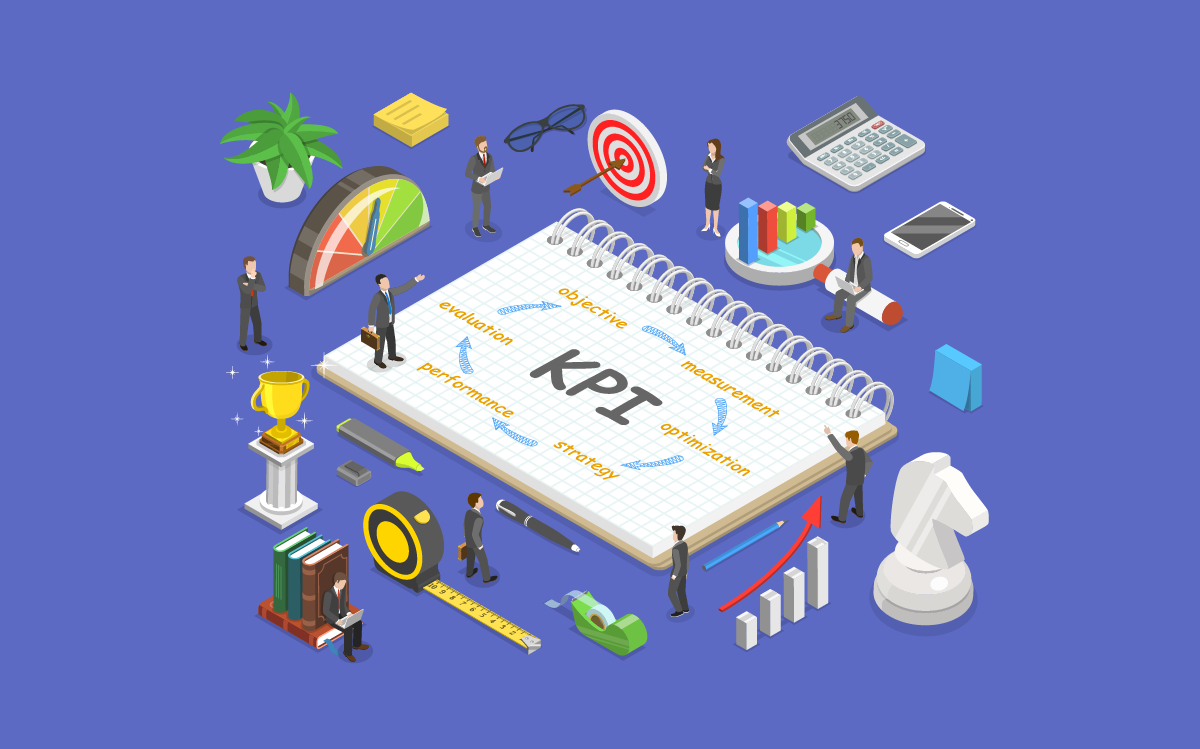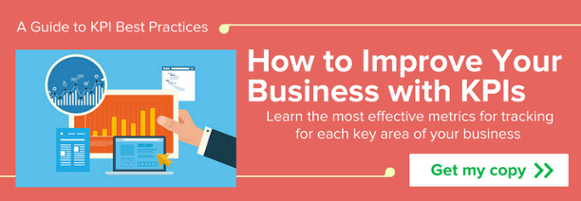5 KPI Examples You Can Learn From

Key performance indicators (KPIs) can be invaluable for learning about your organization’s internal processes and identifying opportunities for improvement. However, many leaders wonder what specific KPIs they need to track to achieve better performance.
The answer is: “It depends on what your goals are.” There are many different types of performance metrics that you can track—and what you want to track should change depending on what your goals are.
It helps if you know what kinds of goals you have, and what KPIs are useful for those goals. With that in mind, here are a few KPI examples you can learn from, as well as a quick explanation of what performance metrics are.
Here are a few different KPI examples that you might find interesting for setting your own goals:
KPI example #1: Past due schedules
Being able to stay on schedule is critical for service delivery. Tracking process metrics such as past due schedules helps you assess how effectively you’re meeting your time-based service level agreements (SLAs).
The easiest way to do this is to take a look at your open schedules and see how many of them are past due vs the total amount. If there is an excessive amount of past due schedules, then you know there is a problem with your processes that needs fixing so that you can:
- Complete tasks more efficiently to avoid running late; or
- Revise schedule estimates to make them more realistic.
This process metric helps your organization meet its SLA obligations more consistently by identifying opportunities for improvement.
KPI example 2: Profit margin percentage
Financial metrics are important to any organization. In a for-profit business, a KPI like profit margin percentage is almost always indispensable information. Profit margin percentage is frequently used by business owners and managers to assess the overall health of the business and establish whether current efforts are generating a worthwhile return on investment.
Gross profit margin percentage can be calculated by taking your profits compared to your total expenses for generating that profit. For example, if a team has profits of $100,000 in a month, and their total expenses for salary, office/retail space, fuel, etc. was $50,000 for the same period of time, their gross profit margin would be 200% (100,000 / 50,000 = 2).
If financial metrics like profit margin percentage are too slim (or are negative), then that’s a strong indication that changes need to be made.
KPI example 3: Kill rate percentage
For a service-oriented organization, performance metrics such as kill rate percentage are a great tool for monitoring how productive employees are. Kill rate percentage is an employee performance metric that measures how many tickets are opened vs the number of tickets that have been closed for a given employee or team during a set time period.
Ideally, kill rate percentage should be at 100% or more. How can you have a kill rate percentage that is over 100%? By closing leftover tickets from a previous period. For example, say Shift A (9 am – 5 pm) opens 250 tickets, and closes 200 of them. Then Shift B (5 pm – 12:00 am), opens another 200 tickets, but closes 250 (completing the tickets left over from Shift A). Shift A’s kill rate percentage would be 80%, while Shift B’s kill rate would be 125%.
What does this employee performance metric teach you? It could help you identify when a person or team is underperforming compared to their peers. In the above example, one shift is completing roughly 25% more work while being an hour shorter. This could be because of a number of reasons, such as disparities in team size, task complexity, and overall team motivation or skill.
Using kill rate percentage to identify the discrepancy and investigate its cause could help you find ways to increase team productivity in the future.
KPI example 4: Lead attrition
In any sales process, there will be a certain amount of attrition as leads drop out. Tracking sales metrics such as lead attrition is crucial for ensuring a healthy sales process.
For example, say your sales funnel has a 90% rate of lead attrition from initial contact to qualifying a lead. Such a high rate of attrition so early in the sales process could be an indication of a problem with the process. This could be caused by issues such as misaligned lead generation efforts (drawing in potential clients/customers who are a poor fit for your products and/or services) or sales team members making critical errors during their lead nurturing efforts (such as actively offending potential customers).
By tracking lead attrition and identifying the cause, it is possible to improve your sales process and increase revenue generation.
KPI example 5: Customer acquisition cost
Marketing is a key activity for any business to attract customers. However, it’s important to balance the money spent on acquiring customers against their lifetime value to ensure that marketing efforts aren’t cutting into profits. This is where tracking marketing metrics such as customer acquisition cost becomes important.
Marketing department leads can track spending for all of their efforts and compare that to the number of new customers generated by said marketing to determine their customer acquisition cost. For example, if the total spend for the marketing department is $100,000 dollars per year, and the department generates 100 leads during that time, then the customer acquisition cost would be $100 per customer.
However, this alone doesn’t tell us whether the expenditure is sustainable or not. If the total value of a customer is less than $100, then the company is losing money on its marketing. If the lifetime value of a customer is significantly higher than $100, on the other hand, then spending $100,000 dollars to get 100 customers makes sense.
Tracking customer acquisition cost and other marketing metrics can be immensely useful for optimizing your marketing and improving your return on investment for marketing spend.
What are performance metrics/KPIs?
Performance metrics, also known as KPIs, are a method of tracking or benchmarking specific activities and outcomes. They record a specific statistic so it can be used to measure progress.
There are countless different KPIs you could potentially use to measure performance for your organization—far too many for any one person to track them all. Some performance metrics are simple to track (with the right tools, at least), while others can be harder to quantify accurately and objectively.
The best KPIs tend to be ones that are:
- Easy to track;
- Possible to improve with effort;
- Relevant to your business’ goals;
- Simple to explain to employees; and
- Able to be completed in a timely fashion.
Need help tracking performance metrics or want to learn more about KPIs? Reach out to the BrightGauge team for help and insights.
Free MSA Template
Whether you’re planning your first managed services agreement, or you’re ready to overhaul your existing version, we've got you covered!



